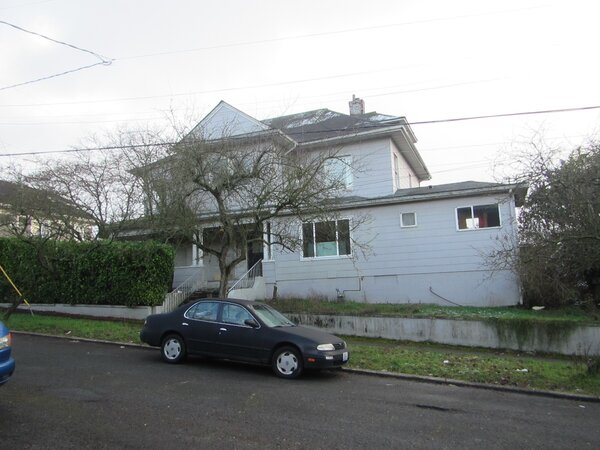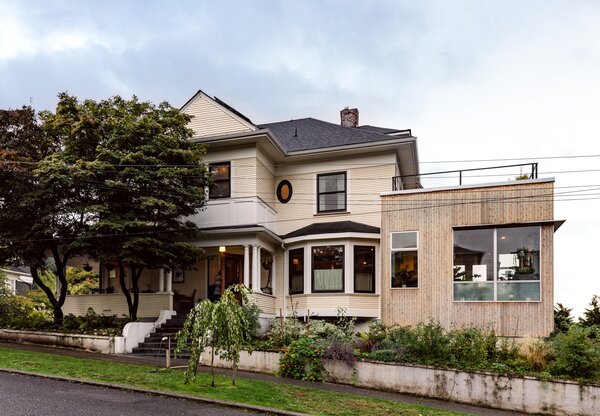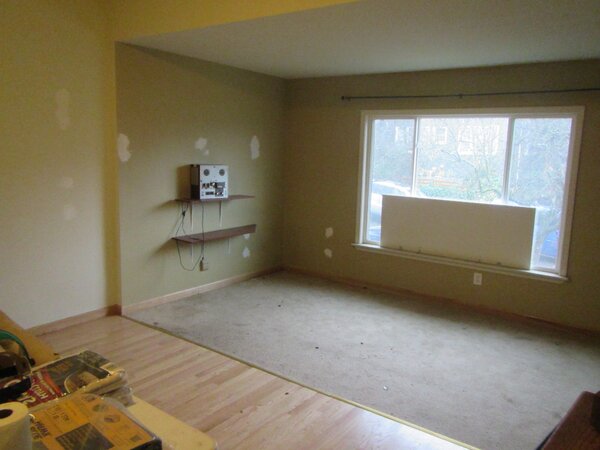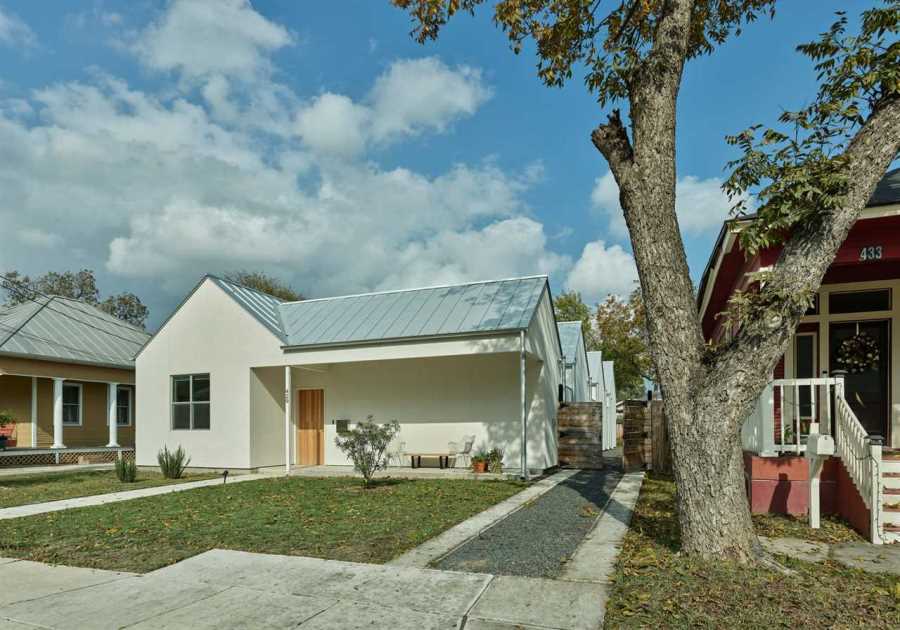Best Practice Architecture founding partner Ian Butcher helps a friend carve away layers of a historic home while embracing its eccentricities.
When Matthew and Holly moved into their last house, a "1990s, totally serviceable box that we never fell in love with," says Matthew, they immediately started searching for the next one. Both work in the arts, she as a playwright, communications professional, and administrator focused on equitable access to art and education, and he as the cofounder of a contemporary arts center and consultant. They wanted a project in the same central Seattle neighborhood where they lived with their child.
Their search went on for five years before they found this home partially hidden behind a tall laurel hedge. "At that point we had seen enough of the fixers that came on the market in the central core, which is not very many, to know how unusual this house was," says Holly.
Before: Exterior

Before: In 2016, Matthew and Holly bought this 1904 home in Seattle, Washington. It had been remodeled and added onto beyond its original size and style in the hundred-plus years since its construction.
Courtesy of Best Practice Architecture
The house was originally built in 1904 by David Kaufman, a Jewish tailor and merchant who owned twelve acres that would later be platted as the Kaufman Addition. For decades, the home served as a single-family residence with details such as deep front window seats and a bronze figurine holding a torch on the staircase newel post. From the 1950s onward, the building underwent a succession of changes, becoming an elderly care center, a Buddhist retreat and bookstore, and finally, a series of individual rooms for rent, with every door besides the kitchen fitted with a lock.
After: Exterior

Matthew and Holly worked with Best Practice Architecture on the remodel, removing the front portion of the addition from the 1950s and reinstating the original bay window. The remaining addition had to be rebuilt—it’s clad in tongue-and-groove 3-inch "tight knot" vertical cedar boards from Dunn Lumber to emphasize that it’s not part of the original design. The main body of the house has horizontal cedar clapboard that was revealed when the gray cement tile was taken off.
Zack Bent
By the time Matthew and Holly toured the home, much of its original detail was gone, and walls had been haphazardly moved, but they were struck by what remained. "Even through all those interruptions, there was a grandeur and a scale that was really obvious in it," says Matthew. After purchasing the property, they reached out to friend and architect Ian Butcher, founding partner of Best Practice Architecture, for a collaborative remodel.
Butcher provided design guidance, often on the fly—he lives close by, which made for easy stop-ins, and says "it was a lot of phone calls and sketches on-site"—while Matthew acted as general contractor, having remodeled a home on his own before. "The construction was literally me here with a hammer, hiring subcontractors, and checking in with Ian, like, ‘Hey, can I get a detailed drawing of that window?’" recalls Matthew.
Before: Dining Room Window

Before: A 1955 addition, denoted by the carpeted floor, had boxed in the original bay window.
Courtesy of Best Practice Architecture
See the full story on Dwell.com: Before & After: In Seattle, a 1904 House Sheds Decades of Remodels—and Five Tons of Debris
Related stories:
- Before & After: They Gave Their Tiny Kitchen a Donald Judd–Inspired Upgrade
- Before & After: Their 1890 Farmhouse Hides a World of Color Behind Its Gray Facade
- Before & After: He Gave His Hollywood Hills Midcentury an All-Electric Upgrade
Read More
By: Melissa Dalton
Title: Before & After: In Seattle, a 1904 House Sheds Decades of Remodels—and Five Tons of Debris
Sourced From: www.dwell.com/article/before-and-after-corner-copia-house-renovation-best-practice-architecture-seattle-eb88c83a
Published Date: Wed, 05 Jun 2024 18:59:20 GMT
Did you miss our previous article...
https://trendinginbusiness.business/real-estate/winter-may-be-over-but-this-park-city-home-is-just-a-skip-away-from-the-slopes
.png)





